FOOD FOR RE-BALANCING YOUR HORMONES
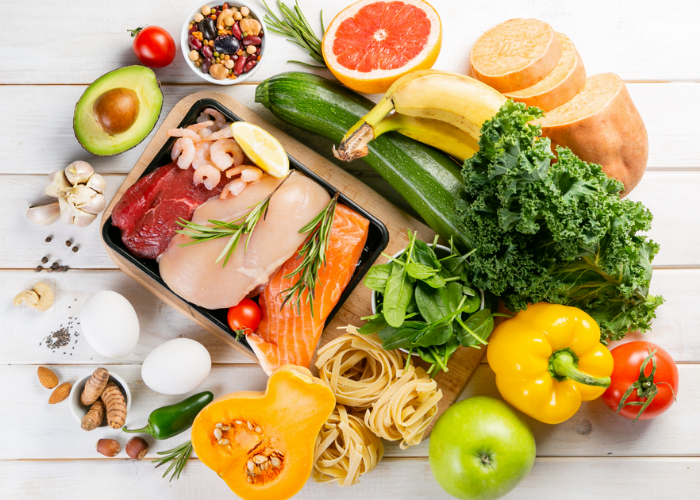
I’m writing this post under the statement that I’m not a doctor or nutritionist. I’m just an inspired learner who has taken ownership of my well-being and health and want to share what I have learned. Before making any change on your diet, always consult with your healthcare provider.
Reading books and listening to doctors who specialized in functional medicine made me realize how food can influence hormonal imbalances, stubborn weight gain, fatigue, brain fog, depression, insomnia, blood pressure issues, gastritis, acne, digestive issues, irregular periods, metabolic disorders like: cancer, diabetes, hyperthyroidism and more.
However, the good news is that most of these conditions are reversible!
I know first hand having had irregular periods when I was younger, suffered severe acne in my early thirties and discovery of a polyp in my intestine that could have developed into cancer with time.
The body is a perfect creation! It lets us know through different symptoms like a constant headache, a persistent rush in our skin that comes and goes or anything else that persists something is going on.
My gynecologist says that I’m in tune with my body. That is because, it has become a priority for me to listen to my body and try to reverse any hormonal imbalance. So, I can make adjustments that balances my hormones and resolve many of my symptoms naturally.
HOW TO OPTIMIZE YOUR HORMONAL BALANCE?
I’ve found that hormonal balance requires a healthy digestion, stable sugar levels and a well-functioning liver.
These apply for both women and men! I see these three things as the foundation to having a good hormonal health. Restoring these three pillars of our health, will not only re-balance your hormones but could reverse other conditions like: allergies, hives, weight gain, and others.
WHERE SHOULD YOU BEGIN?
Always start by healing your digestion. It’s the center of your health. Most women with hormonal issues experience gas, constipation, bloating, acid reflux, irregular periods, severe symptoms of premenstrual syndrome.
One way of healing your digestion is identifying the food that causes a reaction in your body and consuming food that will enhance balance in your gut.
Up next, I’ will give you a list of food you could consider to add to your diet.
Ladies, This list is based on your menstrual cycle. Learning what to eat for all phases of your menstrual cycle can make a difference of how you are feeling.
OVERVIEW THROUGH MENSTRUAL PHASES
The technique described here is based on a 28-day cycle, though most women’s cycles tend to run between 25 and 36 days. Only 10 to 15% of women have cycles that are exactly 28 to 30 days. Day 1 is counted as the first day of a period.
As an example, this schema is based on a 28-day cycle.
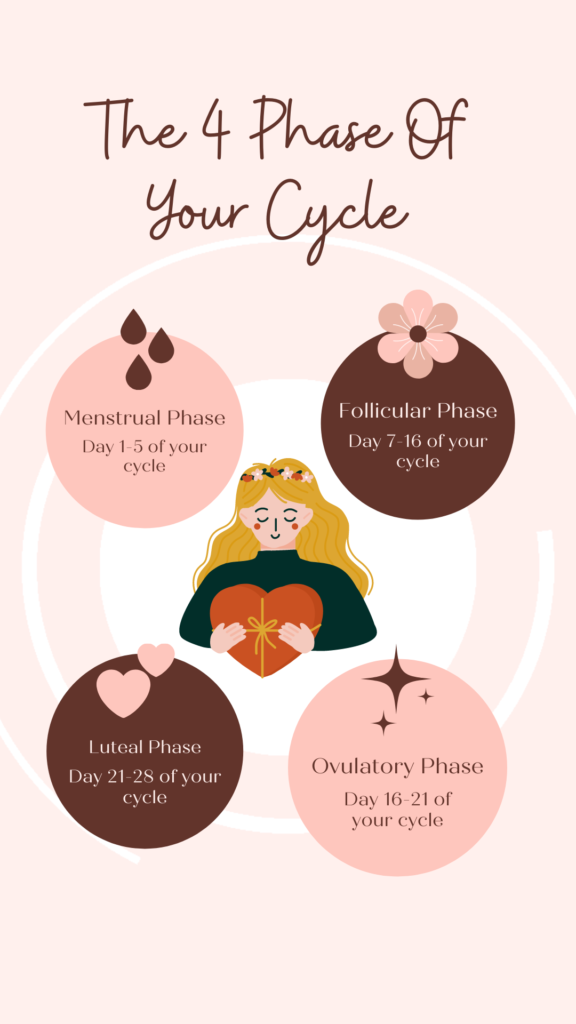
Now, let’s talk about the food you could include to optimize each phase of your cycle, to get most of the nutrients you need and have an optimal digestive health.
GUIDE OF FOOD YOU CAN EAT FOR EACH CYCLE PHASE
MENSTRUAL-FOLLICULAR PHASE
This phase starts with menstruation. It’s called the follicular phase because your pituitary gland releases a hormone called follicle-stimulating hormone (FSH), which stimulates the follicles in your ovaries to mature. These contain your eggs.
WHAT TO EAT?
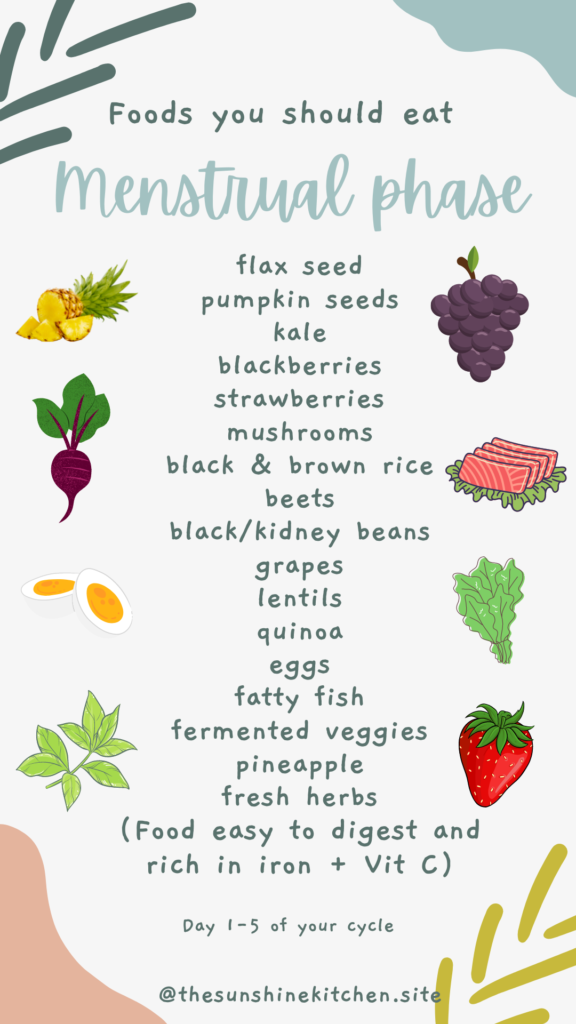
These follicles are making estradiol, a specific form of estrogen, whose main job is to stimulate your uterine lining to grow and thicken. The follicular phase is when women generally feel their best—energized, confident, sexy, and strong. The follicular phase ends right before ovulation. Source
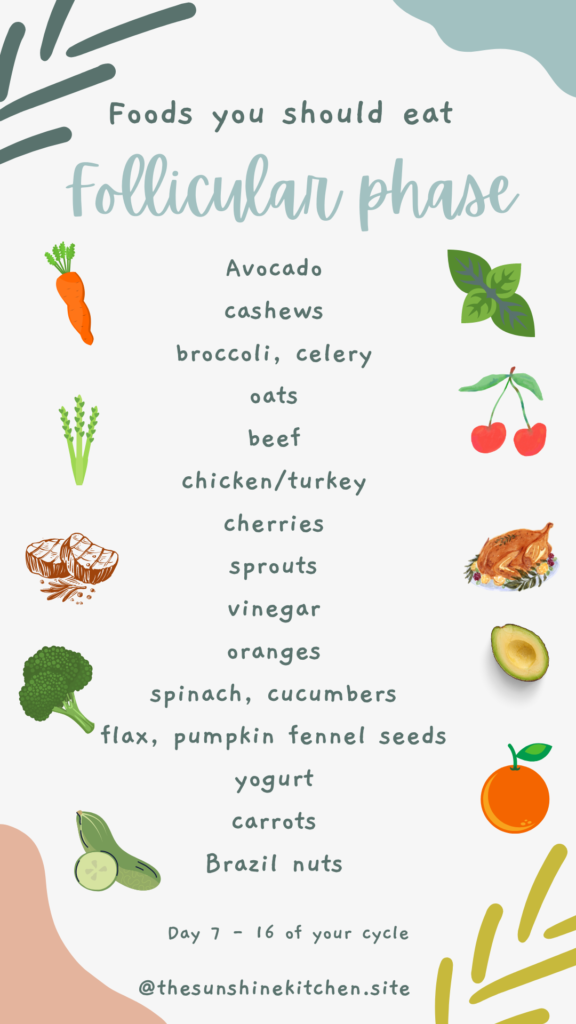
What to avoid during these phases:
*Processed or fast food, soft drinks.
*Artificial flavors, additives and preservatives.
*Alcohol
*Caffeine
*Inflammatory foods: corn, soy, gluten, dairy, peanuts.
*For some people nightshade foods can be pro-inflammatory. These could be: white potatoes, eggplant, bell peppers, cayenne. If you’re sensitive to this kind of food, then stay of way from them, especially during the menstrual phase. When a food causes inflammatory issues its because they trigger more cortisol production. This leads to issues with blood sugar and estrogens.
OVULATORY-LUTEAL PHASE
Lasting just 16 to 32 hours, the ovulatory phase is the shortest phase of the menstrual cycle (source).
This phase is characterized by a peak in estrogen levels as well as a surge in LH (luteinizing hormone).
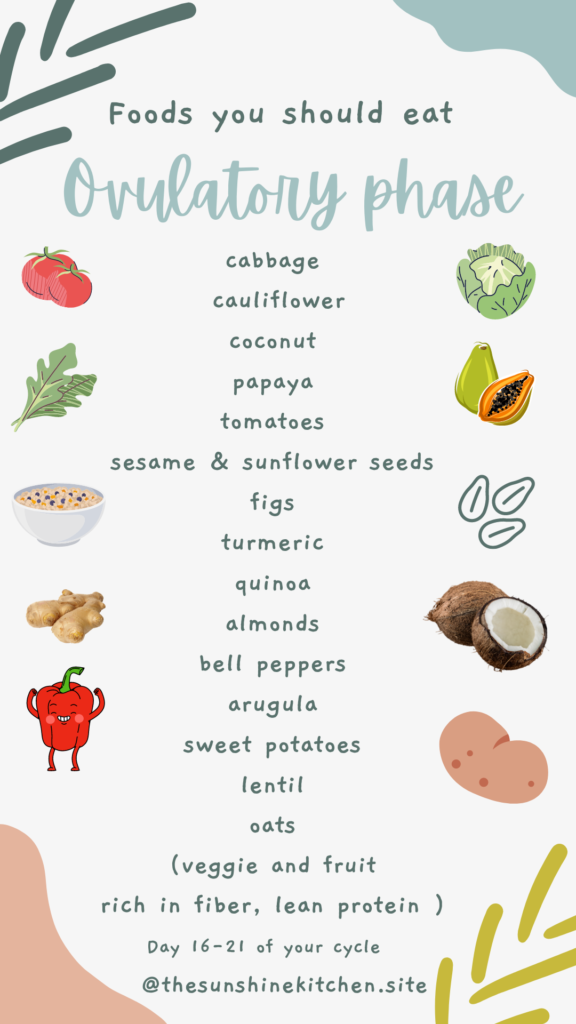
About 10 to 12 hours after the increase in LH occurs, an egg is released.
Once the egg is released, the ovulatory phase is officially over. FSH (follicle stimulating hormone). So the woman’s body will be preparing for one of two potential outcomes:
- Pregnancy.
- Another period.
So, she will be in the luteal phase. During this phase:
- progesterone starts to rise and eventually peaks.
- estrogen is lower.
- the endometrium stops thickening and starts preparing for the potential attachment of a fertilized egg.
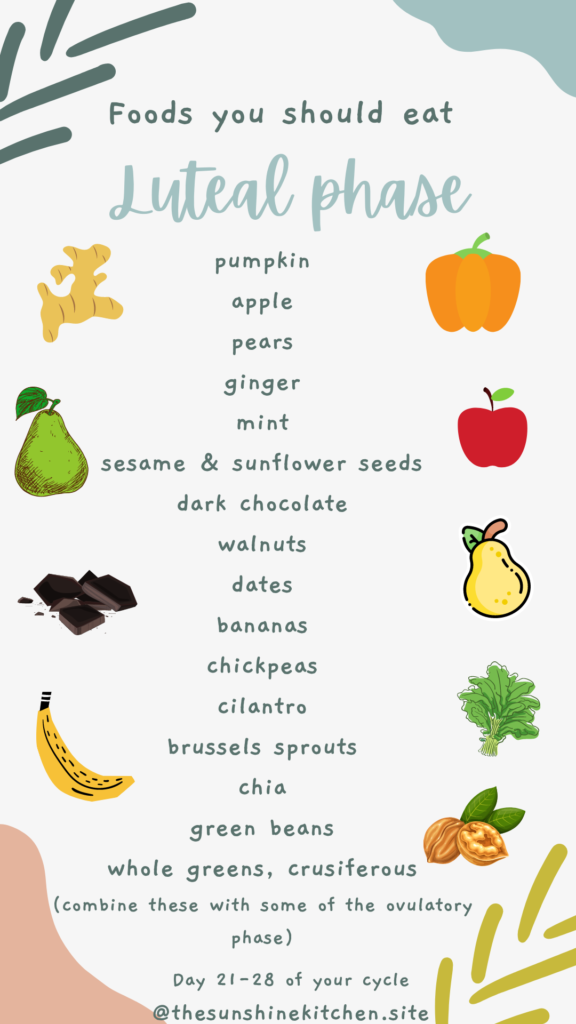
What to avoid during these phases:
- Heavily processed foods or fast foods.
- Artificial ingredients.
- Alcohol.
- Caffeine.
- Pro-inflammatory foods
WHAT IF YOU HAVE AN IRREGULAR OR MISSING PERIOD?
It seems kind of impossible to determine which phase you are in, if you have an irregular cycle, right? But don’t despair you still can benefit from eating according to your cycle. All you need to do is to use the moon as a general guide. I know, it sounds kind of coo-coo but let me show you how the moon’s phases could be synced up with the woman’s cycle.
A famous 1986 study claimed that there was in fact a link. After testing 826 women, the researchers found that 28.3 percent of women began their periods “around the new moon.” Another study in 1987 supported this study’s findings.
So, if a synchronous relationship between the menstrual cycle and lunar rhythm was confirmed through investigation data, there’s a great possibility that many woman who are irregular can use the moon’s cycle as a reference of how to enhance better their diet. In this case, day 1 of your cycle would begin with the new moon. Moon calendar
Menstrual and Follicular Phase ( new moon to full moon)
Ovulatory and Luteal Phase ( full moon to new moon)
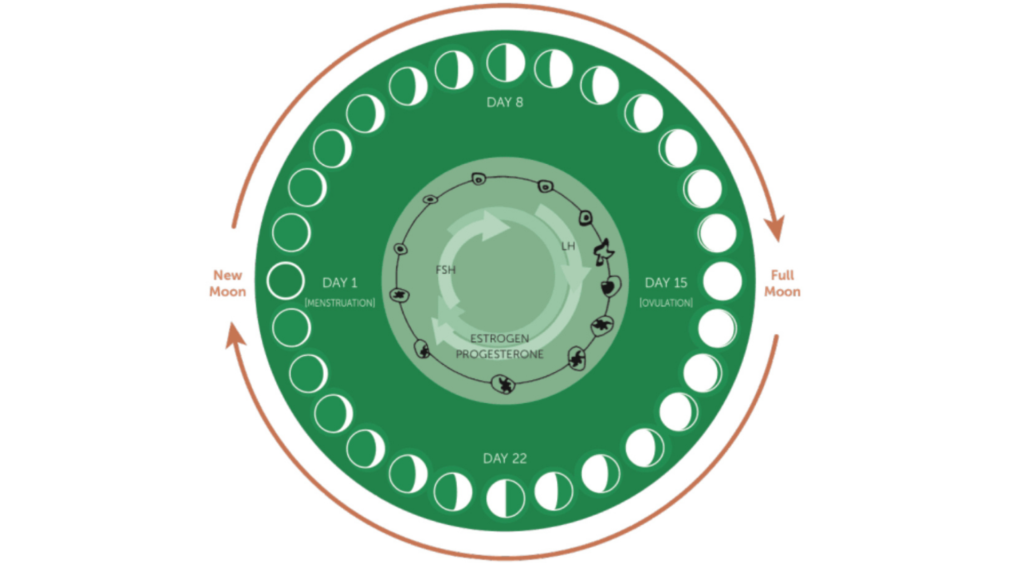
What about women who are in pre-menopause or menopause?
If you’re in pre-menopausal and not cycling, use the guidelines of what to eat during a determine phase at any time you like. For a half of a month, follow the guideline displayed for the menstrual and follicular phase and for the other half of the month, follow the the ovulatory and luteal phase food’s guidance.
If you have already entered to menopause, you can start with the guidelines of what to eat during a determine phase at any time you like and keep combining the food of each pair of phase (like menstrual and follicular) for one to two weeks, then switch to the other two phases (like ovulatory and luteal). The idea is that you get the most nutrients that you can!
CONCLUSIONS
Having a general guidance of what you could include in your diet during a month, could help you to get most of the nutrients your body needs for any time of your life. After all, what we all want is to find a balance in our diet. More balance in your diet means more balance in your hormones.
Using food as medicine can create profound transformations in a person’s health. Food has that power element to nourish, regulate hormones, improve digestion and promote detoxification. So, if we have been given that gift, why not to use it wisely?
In the hormonal balance world there are many factors that can affect this delicate balance. That is why, it’s very important to work with a doctor to test you and diagnose property any condition. So, once you know well about your condition, you can talk to any dietitian that helps you to make changes in your diet and maintain optimal hormone levels.
It is also important to know that just because a particular food isn’t listed in the guidelines of what to eat during each phase, it doesn’t mean you have to avoid it at all. We’re just highlighting what you need to prioritize during each phase.
We hope you’ve found this post useful and encourage you to search more about how a balanced and nutritious diet can bring healing to your body.
If you know someone who can be interested about this post and can be useful for her, remember to share it!
You also can leave a comment and rate it below this page! ❤️
